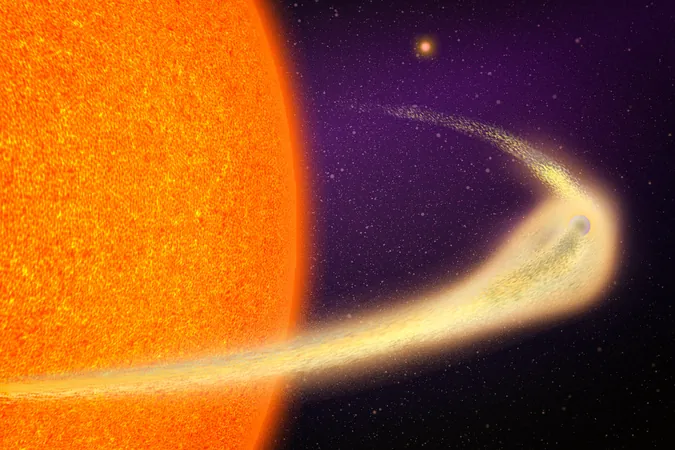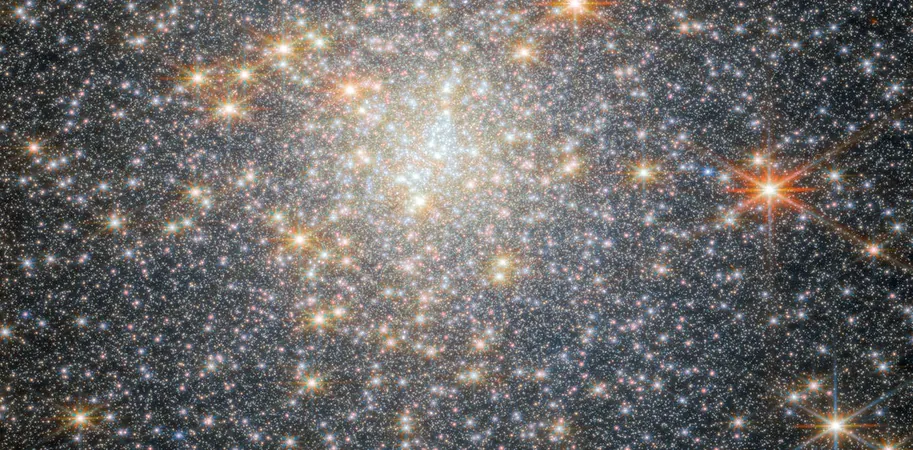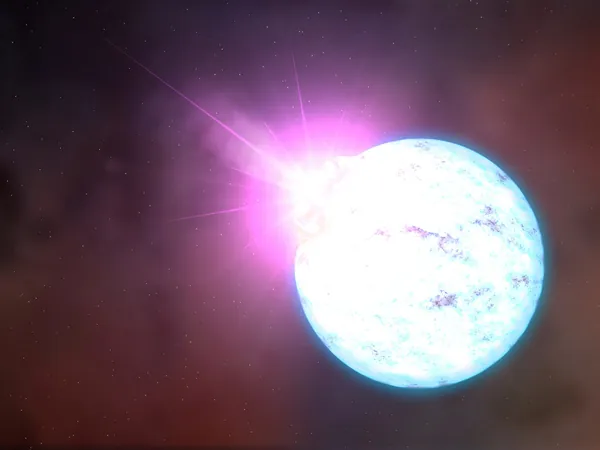
Astronomers Uncover a Dying Planet 'Melting' into a Comet-Like Tail!
2025-04-22
Author: Jacques
In a groundbreaking discovery, astronomers from MIT have found a planet that's rapidly disintegrating, located about 140 light-years from Earth!
Dubbed BD+05 4868 Ab, this planet is roughly the size of Mercury but orbits perilously close to its star—around 20 times closer than Mercury is to our sun—completing its orbit in just 30.5 hours. The intense heat from its proximity to the star has turned the surface into a molten state, leading to its dramatic evaporation into space.
Using NASA's Transiting Exoplanet Survey Satellite (TESS), the scientists flagged an unusual and changing transit signal. Unlike typical orbiting planets that cause a steady dip in starlight, this planet's transit indicated it wasn't just the planet passing but a comet-like tail of material shedding from it.
"The extent of the tail is enormous, stretching up to 9 million kilometers long—almost half the planet's orbit!" says Marc Hon, a postdoctoral scholar at MIT's Kavli Institute. This planet loses an amount of material equivalent to an entire Mount Everest with each orbit.
At its current rate, researchers project that BD+05 4868 Ab could completely vaporize in just 1 to 2 million years. Avi Shporer, another key member of the team, remarked, "This planet is on its last breath!" Their findings have been published in the prestigious Astrophysical Journal Letters.
Roasting away in a scorching furnace, temperatures reach around 1,600 degrees Celsius (about 3,000 degrees Fahrenheit). As minerals boil off, they escape into space, creating an impressive and dusty tail. This is especially fascinating because of the planet's minuscule gravitational force; it's essentially too weak to retain its atmosphere.
Interestingly, of the nearly 6,000 known exoplanets, only three other disintegrating worlds have been documented. However, BD+05 4868 Ab boasts the longest tail among them, indicating that its vaporization process is catastrophic and will outpace the others.
The nearby bright star facilitates further investigations, particularly with NASA's James Webb Space Telescope (JWST), poised to analyze the mineral content of the tail. This summer, Hon and a graduate student plan to explore the planet's true composition, shedding light on the diversity and potential habitability of similar rocky worlds.
As scientists delve deeper, the hunt for other bizarre and disintegrating planets is ramping up. The shape-shifting signals from these peculiar worlds provide an alluring glimpse into the unseen dynamics of the universe!









 Brasil (PT)
Brasil (PT)
 Canada (EN)
Canada (EN)
 Chile (ES)
Chile (ES)
 Česko (CS)
Česko (CS)
 대한민국 (KO)
대한민국 (KO)
 España (ES)
España (ES)
 France (FR)
France (FR)
 Hong Kong (EN)
Hong Kong (EN)
 Italia (IT)
Italia (IT)
 日本 (JA)
日本 (JA)
 Magyarország (HU)
Magyarország (HU)
 Norge (NO)
Norge (NO)
 Polska (PL)
Polska (PL)
 Schweiz (DE)
Schweiz (DE)
 Singapore (EN)
Singapore (EN)
 Sverige (SV)
Sverige (SV)
 Suomi (FI)
Suomi (FI)
 Türkiye (TR)
Türkiye (TR)
 الإمارات العربية المتحدة (AR)
الإمارات العربية المتحدة (AR)